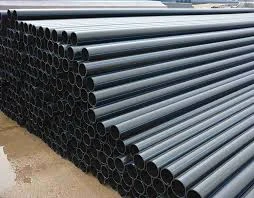Aug . 07, 2024 18:00 Back to list
Understanding the Benefits and Applications of PVC and PPR Pipes with Fittings
PVC and PPR Pipes and Fittings An Overview
In the realm of plumbing and construction, the choice of materials significantly impacts the durability, efficiency, and overall success of any project. Among the various options available, PVC (Polyvinyl Chloride) and PPR (Polypropylene Random Copolymer) pipes and fittings are two popular choices that cater to a wide range of applications. Both materials have unique properties and advantages that make them suitable for different scenarios, from residential plumbing to industrial applications.
PVC Pipes and Fittings
PVC pipes have been a go-to option in the construction industry for decades. Renowned for their strength and versatility, these pipes are made from a synthetic plastic polymer. One of the major advantages of PVC pipes is their resistance to corrosion, which significantly extends their lifespan. Unlike metal pipes, PVC does not rust or corrode when exposed to water, making it an excellent choice for various plumbing applications.
Additionally, PVC pipes are lightweight, making them easy to transport and install. They are also cost-effective, offering a budget-friendly solution without compromising on quality. Available in a variety of diameters, PVC pipes can be used in plumbing, drainage systems, and even in electrical conduits.
The fittings used for PVC pipes are equally durable and can easily connect different pipe sections. Glued joints are common in PVC systems, ensuring a watertight seal that prevents leaks. However, it’s crucial for installers to follow proper procedures when gluing these joints to ensure maximum effectiveness.
PPR Pipes and Fittings
pvc ppr pipes and fittings

PPR pipes, on the other hand, are gaining recognition for their unique characteristics and advantages. Made from a thermoplastic material, PPR is known for its excellent resistance to high temperatures and pressures. This makes PPR pipes a preferred choice in hot water systems, heating installations, and even in industrial settings where hot fluids are transported.
One of the standout features of PPR pipes is their ability to be welded together, forming permanent joints that enhance the overall strength of the system. This is typically done using a fusion welding technique, allowing for seamless connections without the need for adhesives. This method reduces the risk of leaks and creates a unified pipe system that can withstand stress over time.
Moreover, PPR pipes are not prone to corrosion or scaling, which can be common issues in traditional metal pipes. This characteristic ensures a longer lifespan and reduced maintenance costs, making PPR an attractive option for long-term installations.
Conclusion
In summary, both PVC and PPR pipes and fittings offer distinct benefits that cater to varied plumbing and construction needs. PVC pipes are favored for their lightweight nature, cost-effectiveness, and resistance to corrosion, making them ideal for general plumbing and drainage systems. In contrast, PPR pipes excel in applications that require higher temperature resistance and strong, permanent joints.
When selecting between PVC and PPR, it is essential to consider the specific requirements of your project, including the type of fluid being transported, temperature, and pressure conditions. By making an informed decision, one can ensure the reliability and longevity of the plumbing system, ultimately leading to success in construction and installation endeavors.
As both materials continue to evolve with advancements in technology, their usage in modern construction will likely expand, providing even more efficient and sustainable solutions in the future. Whether you choose PVC or PPR, understanding their properties will empower you to make the best choice for your piping and fitting needs.
-
High-Quality PPR Pipes and Fittings Durable ERA PPR & PVC PPR Solutions
NewsJul.08,2025
-
Black HDPE Cutting Board - Durable, Non-Porous & Food Safe HDPE Plastic Cutting Board
NewsJul.08,2025
-
High-Quality CPVC Panel Durable HDPE & PVC Panels Supplier
NewsJul.08,2025
-
Double PE Welding Rod Supplier - High Strength, Durable & Versatile Welding Solutions
NewsJul.07,2025
-
High-Quality PVC-O Pipe Supplier Durable 75mm PVC Pipe & Connections Leading PVC Pipe Company
NewsJul.07,2025
-
HDPE Drainage Pipe Supplier – Durable & Corrosion-Resistant Solutions
NewsJul.06,2025

